Magna5 serves 700+ clients with the most demanding IT, networking, and cybersecurity needs by delivering comprehensive protection and unrelenting support.
That’s why leaders in education, healthcare, government, financial services, manufacturing, and other uptime-dependent fields turn to Magna5 for their crucial IT operations. With local, on-call expertise and national coverage, we put your data and security first.

Magna5 serves 700+ clients with the most demanding IT, networking, and cybersecurity needs by delivering comprehensive protection and unrelenting support.
That’s why leaders in education, healthcare, government, financial services, manufacturing, and other uptime-dependent fields turn to Magna5 for their crucial IT operations. With local, on-call expertise and national coverage, we put your data and security first.
Delivering comprehensive support and protection for your crucial IT operations, Magna5 leverages local expertise and national support to ensure your total peace of mind.
Our vision? To become the industry’s most trusted IT partner, enabling every business we serve to succeed with confidence.
We collaborate with clients and across the Magna5 team to provide complete solutions for every IT challenge.
When clients or teammates reach out, we answer with urgency, assembling the needed expertise to provide quick and accurate resolutions.
We strive to earn and keep the trust of our clients and teammates through our actions every day, fulfilling every promise we make.
No secrets and no surprises. We respect our clients and one another by providing candid assessments and complete, accessible information.
“Good enough” isn’t good enough. We strive to be the best. Our team members are proactive with our problem solving and work to stay on the leading edge of new technologies that drive client success.
Keep transactions and customer data secure with continuous compliance processes from Magna5.





Robert (Bob) is an experienced CEO of Private Equity and Venture Capital-backed technology companies with 30+ years leading start-ups, turnarounds, and high growth enterprises in the MS, SaaS, and BPO segments.
Bob has also served on several Boards of Directors, started and successfully exited his own business, and ran a division of a publicly held company. He was a three-time finalist for the Ernst & Young Entrepreneur of the Year award (NJ) and serves on the Advisory Board of the Columbia University Master’s Degree program for Information Technology Management.
Bob is a graduate of the Wharton School of the University of Pennsylvania.

Justin brings more than a decade of experience in the IT services industry to Magna5 – including significant expertise in managed services and the areas of cloud computing, data backup, and security.
In his previous role as COO and co-owner of NetServe365, Justin improved the company’s efficiency and customer-centric services. He oversaw all aspects of the company’s operations, customer service, and new business development during a period of rapid growth — and eventual acquisition by Magna5.
A graduate of Washington and Jefferson College with degrees in Business Administration and Information Technology, he was recognized in MSPmentor’s 250 report as one of the world’s leading managed services executives.

Jerry is responsible for driving organic growth within Magna5’s Managed Services division and plays a key role in leveraging the sales capabilities of other companies Magna5 acquires. He builds and leads high-performance sales teams to increase revenue via new logo sales, expanding customer relationships, and helping build strategic partnerships.
Prior to Magna5, Jerry was VP of Sales and Partner programs at NetBrain, a leading network automation vendor, annually exceeding 125% of targets. Previously, Jerry held multiple executive sales leadership positions with firms such as Global Solutions, Toshiba, MCI, and Konica/Danka, where he was responsible for the highest performing region in North America.

At Magna5, Rick is responsible for quality and consistency of service delivery across the enterprise, incorporating new service offerings into a standardized delivery model, as well as helping ensure a smooth integration for the customers of businesses Magna5 acquires.
Prior to joining Magna5, Rick held senior leadership roles in the outsourcing industry, directing the efforts of business operations and customer experience teams to provide high levels of service to clients in a wide range of industries and sizes — including Fortune 1000 organizations. He has had segment-level P&L responsibility within high-growth service organizations and multibillion-dollar organizations.

Barb is responsible for managing the complete employee lifecycle (recruiting, placement, and orientation), policy and procedure development, performance management, employee relations, and benefit administration at Magna5.
Previously, she was controller at X5 Solutions, a telecommunication technologies provider, managing the Finance and Human Resources functions for more than 20 years. In 2015, X5 solutions was acquired by Magna5, where she became full-time manager of Magna5’s human resources.
A high-energy strategic thinker, Barb provides critical guidance in driving the execution of company goals while multi-tasking a wide range of HR tasks as Magna5 undergoes extensive transformation and growth.

Dena is a seasoned finance executive with over two decades of experience in the IT sector, specializing in finance operations, project development, and process improvement.
Dena’s leadership and extensive experience with acquisitions have been crucial to the successful integration of Magna5’s six acquired companies, as well as in the divestiture of the company’s telecom division.
A Certified Public Accountant with a Bachelor of Business Administration in Accounting from The University of Texas at Austin, Dena is known for her detail-oriented approach and skill in collaboratively leading teams through complex challenges.

Adam brings more than a decade of experience in the IT services industry to Magna5 – and with that, significant expertise in the areas of cloud computing, data backup, dev ops, and cybersecurity.
In his previous role as Owner and Chief Executive Officer of SpinnerTech (later acquired by Magna5 in 2021), Adam oversaw all aspects of operations including engineering, dev ops, customer service, and new business development.
During Adam’s tenure, the company vastly expanded headcount, opening offices in three states and advanced their managed services offerings by expanding into the areas of cloud computing, data backup, and cybersecurity services.

John brings over 30 years of technology industry experience to Magna5, where he manages the Philadelphia metro region.
He was previously Founder and CEO of Interphase Systems, Inc., which was acquired by Magna5 in 2022. A best-selling author, sought-after industry speaker, and advisor to boards and executives, John also serves as a member of InfraGard ⎯ a partnership between the FBI and the private sector that shares information and threat intelligence to prevent hostile acts against the United States.
He holds a Bachelor of Science degree from Rutgers University and an MBA from Penn State University.

Kevin brings over four decades of IT industry experience to his role at Magna5, where he directs operations in Virginia and West Virginia.
As the founder and President of Advanced Network Systems, Inc, Kevin oversaw the company’s growth from its inception in 1996 until its acquisition by Magna5 in 2023. By 2023, Advanced Network Systems had customers across the mid-Atlantic region and specialized in managed security and managed IT solutions for small to midsize business as well as state and local government agencies.
Kevin is committed to his local community, having served on the Charlottesville-Albemarle Chamber of Commerce’s board of directors, and on the Emergency Food Bank’s board of directors as a Treasurer and member.
Our teams continue to win industry awards — and customer accolades. See what they’re saying about Magna5’s expert service.
Our teams continue to win industry awards — and customer accolades. See what they’re saying about Magna5’s expert service.
Cisco Certified Network Associate
(CCNA)
Cisco Certified Network Professional Enterprise
(CCNP Enterprise)
Cisco Certified Network Professional Security
(CCNP Security)
Cisco Meraki Network Associate
(CMNA)
CompTIA CySA+
CompTIA PenTest+
CompTIA Security+
Fortinet Certified Associate
– Cybersecurity
Fortinet Certified Professional
– Network Security
Fortinet Certified Solutions Specialist
– Network Security
Certified Information Systems Security Professional
(CISSP)
Systems Security Certified Practitioner
(SSCP)
Certified Information Security Manager
(CISM )
Microsoft Azure Administrator
(AZ-104)
Microsoft Azure Fundamentals
(AZ-900)
Microsoft 365 Security Administration
(MS-500)
Microsoft 365 Fundamentals
(MS-900)
Palo Alto Certified Network Security Administrator
(PCNSA )
VMware Certified Professional
(VCP)
VMware Certified Professional
– Data Center Virtualization
ITIL 4 Foundation
Commvault Certified Engineer
Commvault Certified Professional
AWS Certified Cloud Practitioner
AWS Certified SysOps Administrator
– Associate
Apple Certified iOS Technician
Apple Certified MAC Technician
CCNA Routing and Switching
– Cisco Certified Network Associate Routing and Switching
Cisco Certified Specialist
– Enterprise Advanced Infrastructure
Cisco Certified Specialist
– Enterprise Core
Cisco Certified Specialist
– Enterprise Design
Cisco Certified Specialist
– Network Security Firepower
Cisco Certified Specialist
– Network Security VPN Implementation
Cisco Certified Specialist
– Security Core
Cisco Certified Specialist
– Security Identity Management Implementation
Cisco Certified Specialist
– Web Content Security
CompTIA A+
CompTIA Cloud Essentials
CompTIA IT Operations Specialist
CompTIA Network+
CompTIA Network Security Professional
CompTIA Network Vulnerability Assessment Professional
CompTIA Project+
CompTIA Secure Infrastructure Specialist
CompTIA Security Analytics Professional
DELLEMC Associate-Information Storage and Management Version 2.0
EC-Council Certified Encryption Specialist
Fortinet Certified Fundamentals – Cybersecurity
Fortinet Network Security Expert Level 4
(NSE4)
Fortinet Network Security Expert Level 5
– Enterprise Management System
(NSE5 EMS)
Fortinet Network Security Expert Level 5
– FortiAnalyzer
(NSE5 FAZ)
Juniper Networks Certified Associate
(JNCIA)
Linux Essentials
Windows 10
(MD-100)
Managing Modern Desktops
(MD-101)
Microsoft 365 Identity and Services
(MS-100)
Microsoft 365 Mobility and Security
(MS-101)
Microsoft 365 Certified:
Fundamentals
Professional Scrum Master
(PSM)
Salesforce Administrator
Salesforce Advanced Administrator
Salesforce App Builder
Slack Certified Admin
VMware Certified Professional 6
(VCP6)
VMware Certified Professional
– Data Center Virtualization 2021


Magna5 goes beyond basic IT support to enable your company’s growth — while optimizing systems and minimizing data-related risks. Learn how we help clients take on business challenges, without compromise.
Become part of our growing team and expand your expertise.
We partner with sales organizations like yours to hit big goals.
Magna5 provides comprehensive support and protection for crucial IT operations. We leverage our local expertise and national support to ensure our clients’ total peace of mind. From IT Managed Services, to Cloud Services and Cybersecurity, we strive to be the industry’s most trusted IT partner, enabling businesses to succeed with confidence.
© 2024 Magna5. All rights reserved.
